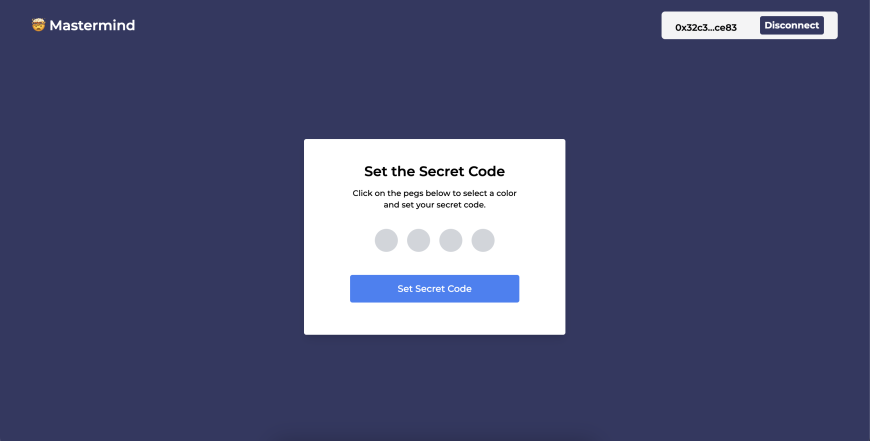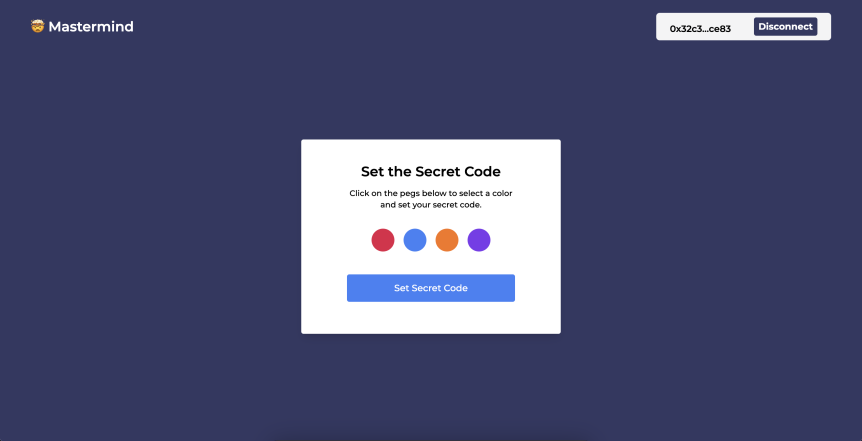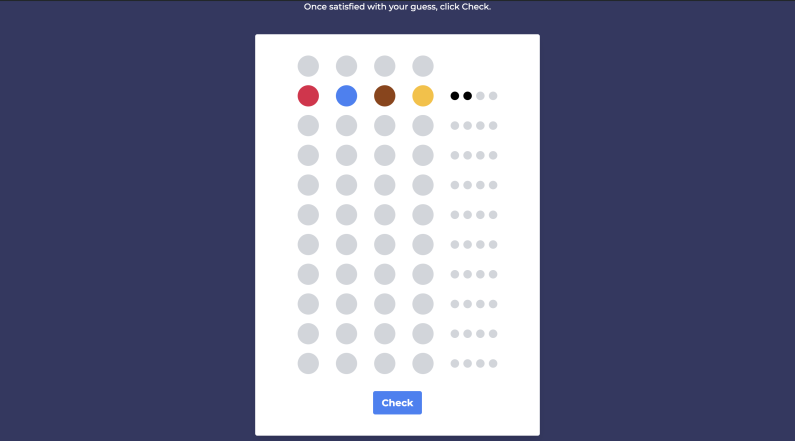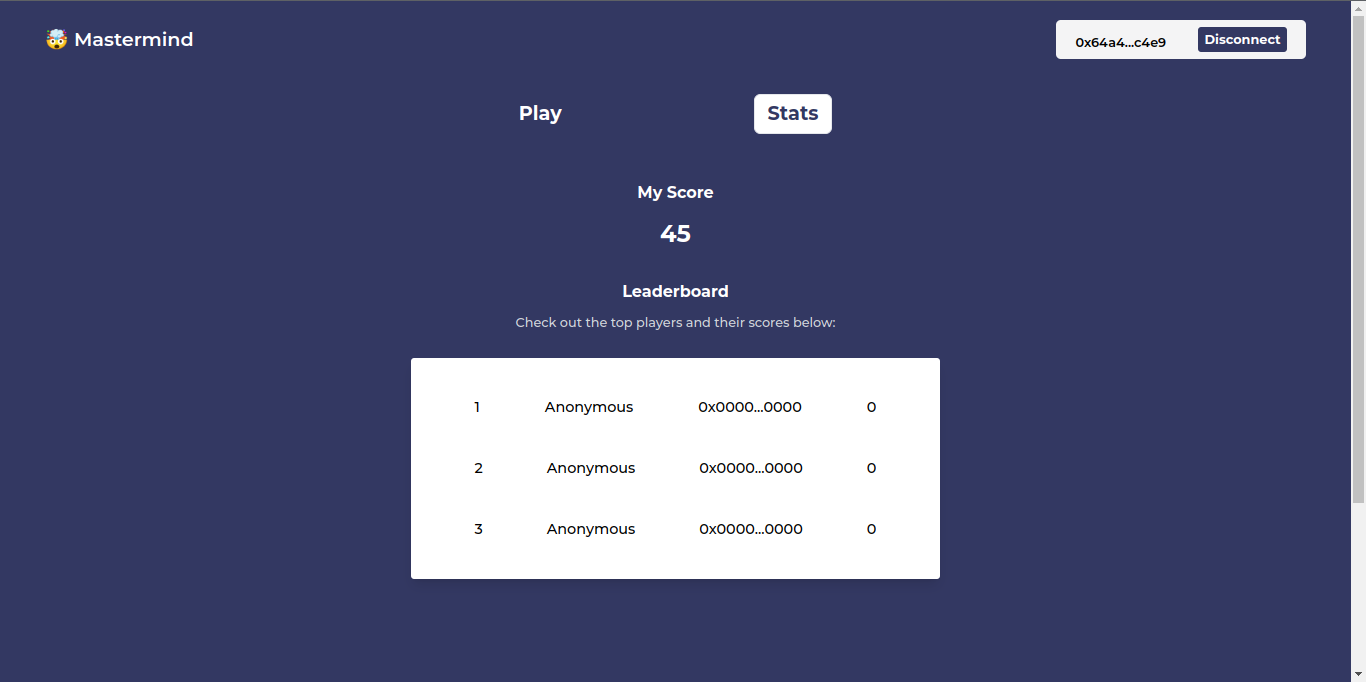Mastermind
Mastermind is a classic code-breaking game for two players. It is a game of logic, deduction, and strategy where one player creates a secret code, and the other player tries to guess the code within a limited number of attempts.
Project Description
Introduction Imagine a game that combines the thrill of code-breaking with the elegance of a beautifully crafted digital interface. Mastermind is a classic game of logic, deduction, and strategy designed for two players. It invites participants into a world where one becomes the mastermind creating a secret code, while the other steps into the role of the detective, racing against time to decipher it.
Components Decoding Board: A sleek digital board with interactive rows of slots for placing pegs. Colored Pegs: Vibrant, animated pegs in various colors used to create and guess codes. Key Pegs: Distinctive smaller pegs used to provide feedback, typically in contrasting colors (e.g., black and white).
Setup Select Roles: Decide who will be the codemaker and who will be the codebreaker. Create the Secret Code: The codemaker selects a sequence of four colored pegs and places them in the hidden code area. The sequence can contain duplicates and any combination of colors.
Rules Secret Code: The codemaker creates a hidden code using four colored pegs. Attempts: The codebreaker has a set number of attempts (usually 10 or 12) to guess the code. Feedback: After each guess, the codemaker provides feedback: Black Key Peg: Correct color in the correct position. White Key Peg: Correct color in the incorrect position. No Key Peg: Incorrect color.
Gameplay First Guess: The codebreaker places a row of four colored pegs on the decoding board. Feedback: The codemaker places the appropriate number of black and white key pegs next to the guess to provide feedback. Next Guesses: The codebreaker makes successive guesses, using the feedback from previous guesses to refine their strategy. Repeat: Steps 2 and 3 are repeated until the codebreaker correctly guesses the code or exhausts the allowed number of attempts.
Feedback Black Key Peg: Indicates one peg is the correct color and in the correct position. White Key Peg: Indicates one peg is the correct color but in the wrong position. No Key Peg: Indicates one peg is an incorrect color.
Winning the Game Codebreaker Wins: If the codebreaker guesses the exact sequence of the codemaker's code within the allowed number of attempts. Codemaker Wins: If the codebreaker fails to guess the code within the allowed number of attempts.
Strategy Tips Start with Diversity: Begin with a guess that includes a variety of colors to gather maximum information. Use Process of Elimination: Use the feedback to eliminate impossible combinations and narrow down the possibilities. Pay Attention to Patterns: Look for patterns in the feedback to identify which colors are correct and in which positions. Balance Between Colors and Positions: Gradually focus on getting both the colors and their positions correct as you refine your guesses.
Variants Different Lengths: Vary the length of the code (e.g., 3 or 5 pegs) to change the difficulty level. Additional Colors: Increase the number of available colors to make the game more challenging. Multiple Rounds: Play multiple rounds and alternate roles to determine an overall winner based on cumulative performance.
How it's Made
Detailed Project Build Explanation
This project represents a state-of-the-art browser-based game built on StarkNet, designed to provide an engaging and secure gaming experience. The development process involved integrating various cutting-edge technologies to ensure a seamless, interactive, and highly secure platform.
We utilized the @Argent Wallet for secure and user-friendly wallet integration, providing a smooth experience for managing digital assets and interacting with StarkNet-based applications. The @Bravos framework enabled us to build a responsive and interactive user interface, while @Origami offered a consistent and visually appealing design system with reusable components that sped up the development process.
To manage state efficiently, we implemented @Slot, which ensured data flowed smoothly between components and maintained a reactive user interface. For networking and API interactions, @Torii simplified making API requests and handling responses, ensuring robust communication with backend services and enabling real-time updates.
@Kantana provided essential tools for developing, testing, and deploying smart contracts on StarkNet, allowing our application to interact with the blockchain efficiently and securely. One particularly innovative aspect of our project was the integration of zkPass Protocol for user authentication and verification. This protocol uses zero-knowledge proofs to verify user identities without compromising privacy, ensuring user data remains secure and confidential while allowing for robust authentication processes.
Overall, the combination of these technologies resulted in a cutting-edge gaming experience that is both engaging and secure, with a beautiful front end designed to attract users to play games on StarkNet. By leveraging these advanced tools and frameworks, we created a platform that offers high performance, scalability, and an exceptional user experience, making it an attractive investment opportunity in the growing online gaming industry.





